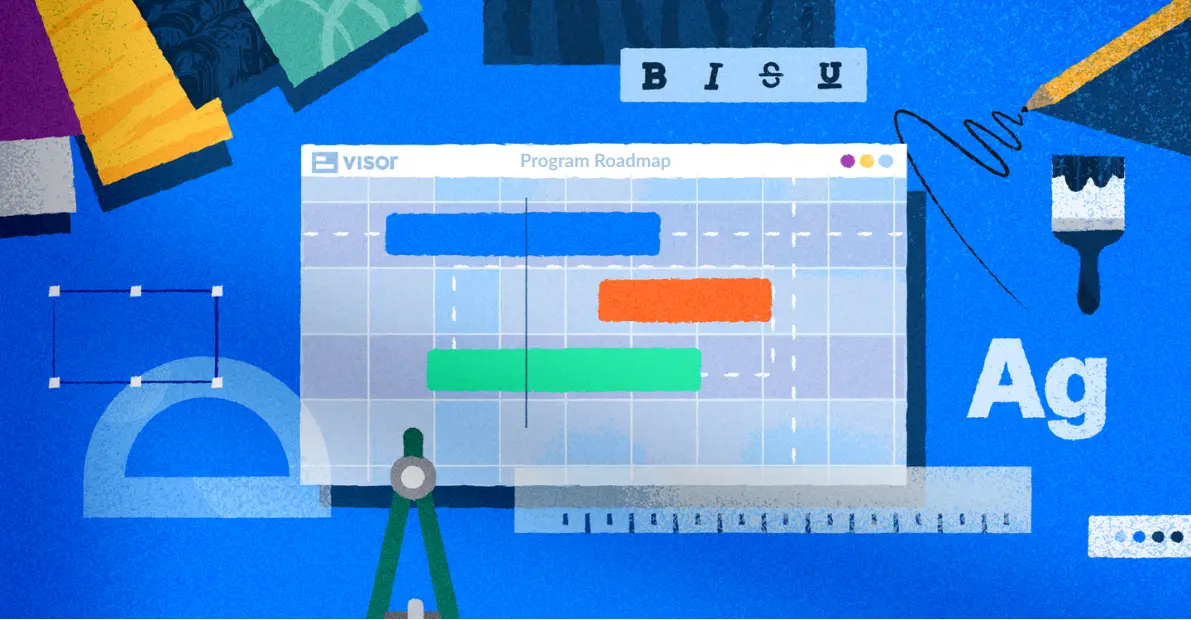
Improving Agile Workflow Optimization – Without a Huge Project
Agile workflow optimization is an important part of ensuring your agile team and their projects are operating optimally. Three things are true of agile workflow optimization, it is:
- Hugely beneficial
- Often avoided
- Often time-consuming.
So, you know you need to optimize your workflow, but who has the time?
Well, you do, actually.
No, really!
If you have an hour a week to spare, you can fully overhaul your agile project management workflow, piece by piece, turning a disjointed and complicated system into one smooth and seamless flow. Here’s how we suggest breaking down an optimization project into manageable tasks.
Want to track this project, or just improve your project tracking in general? Visor is a modern spreadsheet alternative for Jira users that can help get your whole team in alignment, even the ones outside of Jira. Get started for free.
Why a Piecemeal Methodology Works
Workflow optimization in Agile is all about making your process better. You’ll have a smoother system to handle your work, you’ll feel more organized and clear-headed, and you’ll save time. But so many guides out there suggest that this is a massive undertaking, when it simply doesn’t have to be. You can do one task a week or even less and still see those benefits.
If you need to break this into truly tiny pieces, perhaps because of a limited bandwidth or especially slow approval process, you can do as little as one step per sprint.
Remember: if you get off track it’s ok. This isn’t the type of approach where the whole thing fails if anything is left undone. In fact, you might benefit massively from just a few improvements, even if you have to stop and start over the course of months.
This approach isn’t about perfection, it’s just about improvements that matter.
Take the Measure of Your Current Process
You may know where this is going: you’ll need to start with an audit.
The hard part is that you’ll really need to do this; it’s going to save you from unnecessary work and wasted effort. However, “auditing” feels like such an arduous (and, let’s be honest here, kind of boring) task that it turns people off right away. You don’t need to fall into that trap!
When you approach this audit, think of it as something you can do in pieces so tiny that it barely feels like work at all.
PULL: A piece of advice that applies to this whole process: If you’re getting stressed out, simply pause. There’s no pressure to get it all done in this workflow optimization method. If you’re feeling overwhelmed, stop and leave it alone for a while. This will keep you from burning out and giving up before you’ve made an impact.
What you might want to audit:
- What tools are you using?
- Where are you spending your operations budget?
- What are all the steps in your current agile workflow? Why those steps?
- How are you planning sprints? What is or isn’t working about that?
- What best practices are you supposed to be following, and what are you truly doing consistently?
- Where do the biggest problems arise? Can you find a root cause for those issues?
Tools
Once you’ve audited the tools you’re currently using, you can take the measure of the budget vs the use. Are you truly using everything you’re paying for? Are you using it to its best extent? You may reduce workflow friction by cutting out unnecessary, outdated tools that slow down your overall process.
You may also find that you’re using tools that aren’t the best for the job. When you’re trying to force a functionality a tool simply wasn’t made for, it can slow you down and stress you out, and that’s not an optimal workflow. See if there’s a gap that’s missing that a new tool might fill better.
Don’t forget about integrations. Integrations between tools you’re already using are likely to save you significant time on each project. But only if you’re truly using those tools. Visor has a fabulous integration with Jira, for instance, because it was built atop the integration rather than flowing it in later. If you’re a frequent Jira user, check it out. (It’s free!)
Tools to look into:
- Task management systems
- Time tracking
- Documentation hubs
- Tools you’re spending budget on, but haven’t used in a while
Automation
Once you’ve done the work of auditing your current system and looking into tools to help make it better, don’t miss out on a one-and-done fix that can be even more powerful than changes to your software: automation.
In this context, automation refers to any system, process, or procedure you can arrange to update or work automatically, without tons of manual influence from you. It may take some set up, but it should save you loads of time in the long run, creating a much smoother agile workflow.
This can, in fact, roll into your tool upgrade. Some tools offer a level of automation (or integration with external automation tools, such as Zapier) that can tip the scale in making decisions. But there are lots of small automations that you can integrate right away.
For instance, if you’re using Jira to manage projects, you can arrange in-app automations for a range of tasks. If that feature has been hanging over your head as one of those, “I really ought to…” ideas, now is the time to do it.
Elements to consider automating:
- Auto-send emails
- Updating Smart Values
- Enabling or disabling Jira Rules
- Alert systems for due dates
Get Back to Best Practices
Best practices exist for many good reasons. Unfortunately, they’re often a bit of a hassle, and it’s easy to fall out of habit.
Consider what framework you want to use for your workflows. Perhaps it truly is an agile workflow framework. Or maybe that’s just the term you’re using, when in practice a different optimization system would be a better fit.
Look into the Theory of Constraints, Six Sigma, and Lean to compare and contrast the different tactical options and be sure the one you’re using is right for your team. Then commit to it.
Ultimately, this might mean a backlog audit, too. Just like with this workflow optimization system, you don’t need to take it all on at once and can instead make it into an easy series of small tasks. (We have a great guide to help with that.)
Best practices to revisit:
- Different workflow tactics
- Documentation
- Retrospectives
- Strict standups
- Backlog grooming
- Inventory management
- Team onboarding systems
Agile Workflow Optimization can be Easy – Really
Breaking down a big project into smaller, more realistic chunks is a tested and true way of making it feel more manageable to complete. Why not apply the same logic to your overall system?
If you’re looking for more ways to make your projects more manageable, Visor is a free software that acts as a single source of truth… no matter where your teams like to work. Try it for free.
If this article was helpful, considering reading these related articles:





